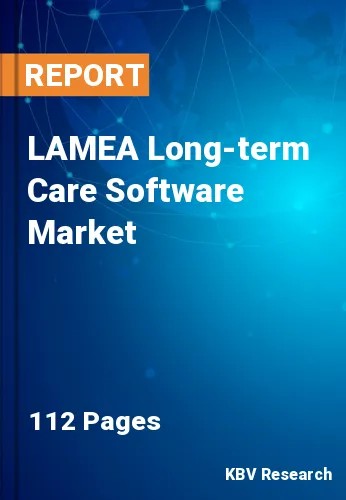The Latin America, Middle East and Africa Long-term Care Software Market would witness market growth of 10.5% CAGR during the forecast period (2024-2031).
The Brazil market dominated the LAMEA Long-term Care Software Market by Country in 2023, and would continue to be a dominant market till 2031; thereby, achieving a market value of $164.9 million by 2031. The Argentina market is showcasing a CAGR of 11.4% during (2024 - 2031). Additionally, The UAE market would register a CAGR of 9.5% during (2024 - 2031).

This software is utilized in various ways to enhance care delivery and improve operational efficiency. Automated documentation processes reduce the time and effort required to maintain accurate patient records. Caregivers can quickly update patient information, track care activities, and generate reports, ensuring that records are always current and accessible.
Software solutions support developing and managing individualized care plans tailored to each resident’s unique needs. This personalization ensures that care is focused on the resident’s specific health conditions, preferences, and goals. This software includes tools for monitoring and mitigating risks, such as fall prevention, infection control, and medication errors. These tools help identify potential risks early and implement preventive measures to enhance resident safety.
Saudi Arabia’s high prevalence of non-communicable diseases (NCDs), including diabetes and obesity, is a significant factor driving the growth of this market. With 68% of deaths in the country attributed to NCDs, the demand for comprehensive long-term care solutions has intensified. Argentina’s growing commitment to improving healthcare accessibility creates an environment conducive to adopting digital health technologies. Nation’s recent investment in healthcare infrastructure, including the World Bank’s $50 million financing to enhance public healthcare services, is set to impact the growth of this market positively. In conclusion, Saudi Arabia’s focus on managing chronic diseases and Argentina’s efforts to improve public healthcare access are both pivotal in driving the growth of the long-term care software market.
Free Valuable Insights: The Worldwide Long-term Care Software Market is Projected to reach USD 8.3 Billion by 2031, at a CAGR of 7.8%
Based on Mode of Delivery, the market is segmented into Cloud Based, On Premise, and Web Based. Based on Application, the market is segmented into Electronic Health Records (EHR), Staff Management, Revenue Cycle Management (RCM), Resident Care, Electronic Medication Administration Record (eMAR), and Other Application. Based on End Use, the market is segmented into Nursing Homes, Home Healthcare Agencies, Assisted living facilities, Hospice & Palliative care, and Other End Use. Based on countries, the market is segmented into Brazil, Argentina, UAE, Saudi Arabia, South Africa, Nigeria, and Rest of LAMEA.
By Mode of Delivery
By Application
By End Use
By Country
Our team of dedicated experts can provide you with attractive expansion opportunities for your business.

